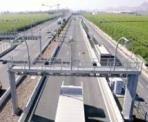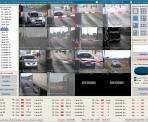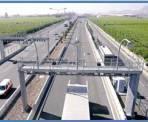DSRC Antenna
Radiofrequency device designed entirely by Indra to resolve the automatic communication and identification needs of the vehicles. The DSRC antenna strictly fulfills the DSRC and EFC standards defined by the committee responsible for their standardization (CEN278): EN 12253 Physical Layer (Class C), EN 12795 Data Link Layer, EN 12834 Application Layer, EN 13372 Profiles, EN ISO 14906 EFC -Application Interface and EN ISO 15509–Interoperability Application Profile.
The antenna supports numerous EFC application types such as PISTA (VIA-T and VIA-T2), A1, GSS, Cardme, CESARE and transactions with encryption (Chile). In addition, other applications can be supported through a firmware update, ensuring interoperability with other electronic collection EFC systems.
There are 3 antenna models (and others can be designed upon request):
- DSRC-PARK: specially designed parking lot access control and management
- DSRC-TOLL: designed for teletoll application on traditional toll roads. The design of its radiation signal is optimized to support high speed readings and avoids readings crossed with adjacent roads
- DSRC-FF: designed for the free-flow application where various antennas are combined in a line to cover various lanes, supporting speeds of over 160km/h, by positioning the tag on the lane. The auto-synchronization algorithm designed by Indra prevents interference
The real time operating system ensures that hardware interruptions generated by the signal modulator are treated in a deterministic manner, thus ensuring a predictable response even with a heavy load of E/S operations.
The antenna has a series RS-232 Ethernet communications interface. Through an embedded web server it is possible to set up the main antenna parameters, view the current operating status, view the communications status and check a list of recent transactions.
The antenna has the CE marking and has passed environmental tests according to the ETSI EN 300 674-1 V1.2.1 (2004-08) and ETSI EN 300 674-2.-1 V1.1.1 (2004-08) standards, offering an operating temperature range between -25 ºC to 70 ºC and an IP65 level of protection.
Its modular, flexible design allows it to perform internal (stand-alone) and external transactions, while offering an open software interface for simple adaptations by the client.




